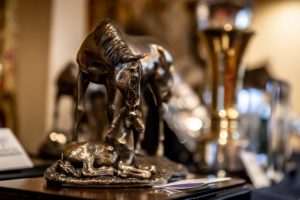You’ve decided to buy a yearling or two but are working to a limited budget: now the sales catalogues have started dropping on your doormat, what do you do next?
If you were to take your lead from successful syndicate manager Nick Bradley, the answer would be nothing – for the time being, at least.
“I’ll have a quick look through the catalogues when they arrive, but mainly to work out how many horses I need to inspect and what time I need to get on the grounds to see them all,” he says. “I certainly wouldn’t be thinking about what I might like or how much I need to pay at that stage.”
In-depth pedigree study is simply not part of Bradley’s methods for finding value. Instead, he combs every lot on the sales ground to draw up his shortlist, which he whittles down further after a second round of inspections.
Racecourse evidence suggests his plan of attack is effective. Nick Bradley Racing’s increasingly familiar white silks with black detail have been carried by Oaks runner-up Mystery Angel (a 22,000gns purchase), 1,000 Guineas third Fev Rover (£20,000) and Coventry Stakes runner-up Eldrickjones (£26,000).
Bradley continues: “What I set out to do is to buy the best racehorses I can find, and my track record shows that I have often got the best runner by a lot of sires in a given year – so Dandalla was the best Dandy Man, Fev Rover was the best Gutaifan, Mystery Angel was the best Kodi Bear and so on.
“Shouldavbeenmore, who has finished a close fourth in the Empress Stakes for us this summer, is by Penny’s Picnic and I don’t think most trainers in Britain would even have ever heard of him.”
So is there no sire or family, however obscure, that he would leave out of calculations? “Without a doubt, none,” comes the answer without hesitation.
“I might not end up buying them, but I certainly wouldn’t rule anything out.”
Not everyone is quite so open-minded, or has the time to inspect so many horses across such a broad range of sales, and trainer Eve Johnson Houghton is one who has enjoyed great success with yearlings selected according to a somewhat stricter set of pedigree criteria.
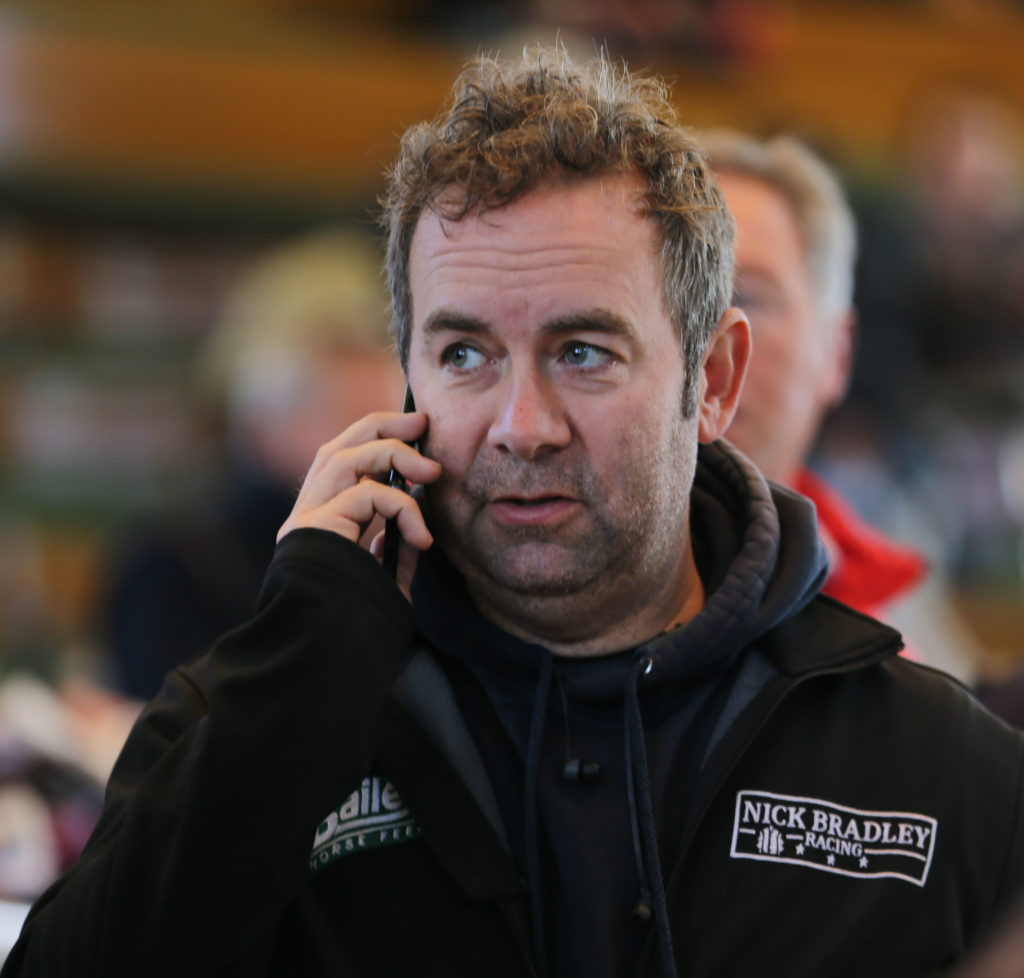
Nick Bradley: combs every lot on the sales ground to produce his shortlist – Photo: Laura Green/Tattersalls
“You’ve got to cut the catalogue down somehow, and I don’t want yearlings out of mares who were very lowly rated themselves, or who have produced lots of horses who are very lowly rated,” she says. “Because however lovely that yearling is, the probability is it’s also going to be very lowly rated.
“There are also certain sires I don’t like, just because I don’t seem to train them well or they don’t get on with me, or sometimes I’ve just taken against them. But then there are other sires I absolutely love, who produce stock who are really tough and hardy, even if they aren’t particularly fashionable.”
Chipotle, trained by Johnson Houghton to win the Windsor Castle Stakes at Royal Ascot in June, makes an interesting case study for the trainer’s approach to pedigrees. He is from the first of Havana Gold’s two most expensive crops, bred in the afterglow of his promising freshman season, and out of a Makfi mare closely related to Attraction; and yet, because his sire had gone cold by the 2020 yearling sales, he was bought for just 10,000gns.
“That’s a really interesting angle I’d always keep in mind, to look out for those sires who did very well in their first season, but had stickier subsequent seasons perhaps because they didn’t get such good mares,” says Johnson Houghton. “The fifth crop of yearlings are likely to be the result of better mares, and I think they can often represent very good value.”
Chipotle was sourced by the trainer with Anthony Bromley of Highflyer Bloodstock from the relatively new Tattersalls Ascot Yearling Sale (now the Tattersalls Somerville Yearling Sale), an event that was specifically targeted.
“I’ve been pretty lucky there with inexpensive yearlings,” says Johnson Houghton. “We were looking for three cheap horses for a syndicate, and Chipotle was one of them. Anthony and I do the yearling sales quite hard together. He helps me select them, and we decide which ones we like and watch them go through the ring.”
Purchasing decisions are not made on the basis of pedigree alone, of course, and asked to put her finger on what it is she is looking for in terms of physique, she replies bluntly: “I like them to have a good walk, to be interested in what’s going on around them, and a good arse as that’s where the engine is!”
Syndication pioneers Kennet Valley Thoroughbreds take a similar approach in thinning out the yearling catalogues on pedigree, before physical inspections take place.
Racing Manager Sam Hoskins, who selects future colour bearers with the operation’s bloodstock adviser Luke Lillingston, says: “We try to buy the best we can, but we have to sacrifice something as we don’t have the biggest budget, and so we do target stock by useful but less fashionable sires sometimes.
“Sir Prancealot was one who we felt was underestimated by the market and we’ve had a lot of luck with him, buying Sir Busker and Dance Fever, although I do feel there is a little too much emphasis put on sires generally, and we tend to forget that there’s a second half of the pedigree.
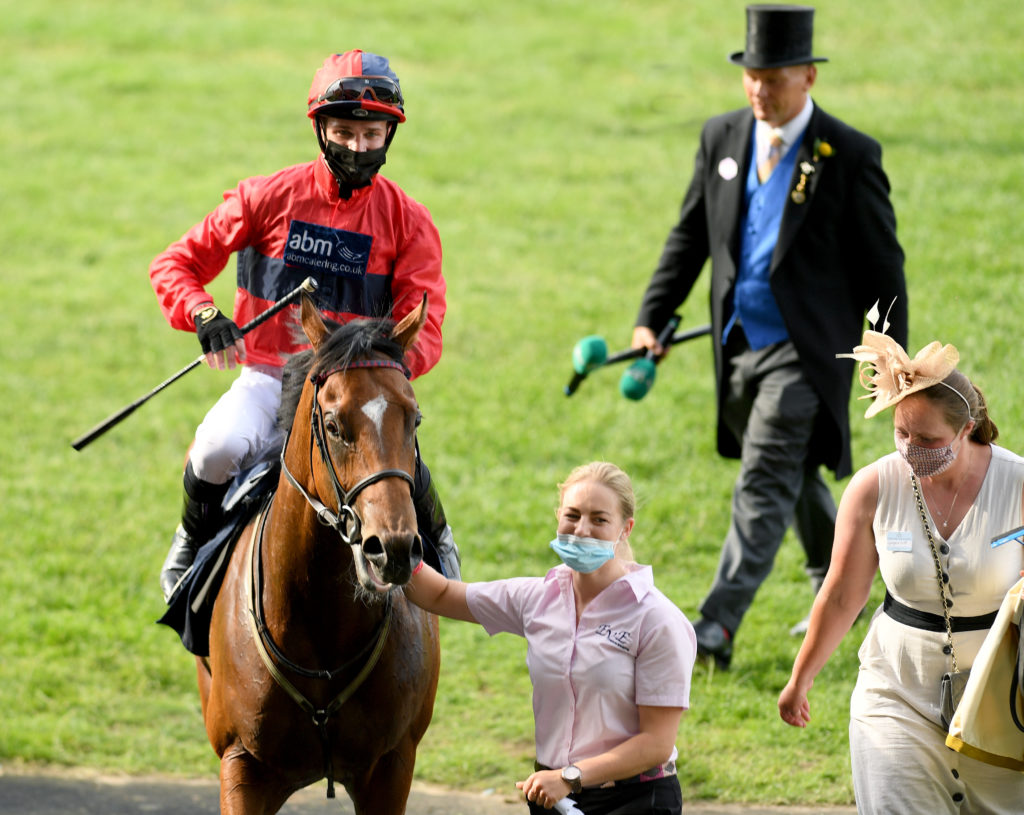
Chipotel: the Windsor Castle winner was sourced for just 10,000gns – Photo: Bill Selwyn
“We’ve worked with Mark Johnston at the sales and it’s interesting how close his criteria are to ours. We’re not quite as strict as him, but we have a lot of things in common: if the dam hasn’t had runners, we want her to have shown at least some ability, but ideally we like progeny of mares who have batted well by producing a few highly rated horses by lesser stallions.”
Pedigree is not just studied in order to gauge the quality that might be transmitted by the parents, either, as Hoskins goes on to explain.
“We also look for a high percentage of winners to runners in the family, and also a high percentage of foals of racing age to have made it to the track,” he says. “That’s a good guide to soundness.”
The quest for soundness is especially important for syndicates, whose members will often have been persuaded to part with their hard- earned cash for a leg in a horse by the promise of enjoyable days out at the races.
“Luke’s an excellent judge, and puts a lot of emphasis on eye and attitude, and he’s done so well finding horses who are sound and love their racing,” says Hoskins. “We want class as well, of course, but that toughness and will to win races is most important for us.”
The recent history of Kennet Valley Thoroughbreds shows that, for all the talk of pedigree and conformational criteria, perhaps the most important weapon in the yearling buyer’s armoury is the expert eye of an agent as experienced as Lillingston.
It was his instincts that allowed the club to buy its Royal Ascot winner and Queen Anne Stakes third Sir Busker for just €25,000 at the Tattersalls Ireland September Yearling Sale of 2017.
“Kudos to Luke, he was always extremely hot on Sir Prancealot,” says Hoskins. “In fact it was probably only because he liked the sire that Sir Busker ended up on our list to look at, because his maternal pedigree lacks depth to say the least.
“He’s out of an unraced Tiger Hill mare who’d had two earlier foals, both of whom were by ordinary stallions and sold for no money, but they were rated around 65, which wasn’t awful considering the chances they’d had, so we marked up the dam a little. Most importantly, though, Sir Busker was just absolutely gorgeous and the fact we bought him paid a big compliment to what a good physical he was.”
The early success of one of the newer syndicates on the scene, Halcyon Thoroughbreds, provides another good advertisement for drawing on the wisdom of those who know what a good horse looks like after many years of practice.
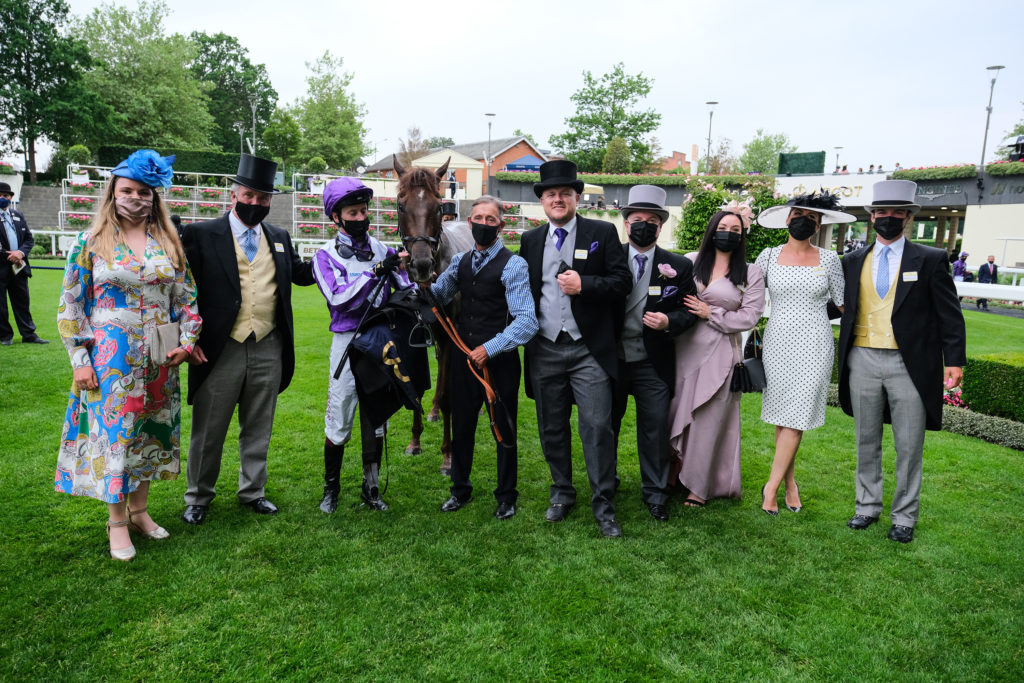
Perotto: the 28,000gns purchase provided Halcyon Thoroughbreds with a memorable result when landing the Britannia Stakes – Photo: Megan Rose Photography
The club, run by friends Jaimie Beers and Liam Keighley, owns recent Britannia Stakes winner Perotto, a son of New Bay who was knocked down to his trainer Marcus Tregoning for the far from extortionate sum of 28,000gns at Book 3 of the Tattersalls October Yearling Sale.
“I can’t emphasise enough how much we owe to Marcus and his team for finding us Perotto,” says Beers. “The horse is from a family they had done well with in the past, as he’s out of a half-sister to the dam of Mohaather, and we really based our judgement on how much they liked him. When people with so much knowledge and experience say they like a horse, you have to sit up and take notice.”
That doesn’t mean that Beers and Keighley don’t put a lot of their own hard work into narrowing down which horses should carry the colours of Halcyon Thoroughbreds, however.
“We can’t compete with the big guys financially – we’re playing more in the £25,000 to £40,000 area – and so we put a lot of effort into picking what we think are the best horses at that budget,” says Beers. “The prep for the yearling sales season goes on all year, really, as we’ll be tracking stallion performance, looking at how the yearlings we saw last year are running, and so on.
“We place particular importance on working out which stallions in our price range will offer the best value for us. Will they have early two-year-old runners but also produce durable stock capable of running for several seasons? That’s really important for a syndicate like ours. We can’t give our members a horse who’s forever locked away in its stables.”
Another angle for finding value in the market is to keep one’s powder dry during the yearling sales season and to buy a foal a few months later instead. Experience has shown Micheal Orlandi of Compas Equine that the waiting game can pay off.
He bought this year’s Royal Ascot winner Lola Showgirl on behalf of owner Kevin Lloyd outside of the ring at the Goffs November Foal Sale for just €15,000, in a spur-of-the-moment decision.
“She wasn’t the most correct in front, and she was quite tall and big, but she was from a solid black-type family out of an Exceed And Excel mare,” he says of the Kensington Palace Stakes winner. “And she came from a good farm in Milltown House Stud. I saw she’d left the ring unsold at around €19,000, and found out that she’d been bred on a foal share and needed to be sold.
“I was a bit on the fence about her but I thought she’d be worth a punt at a price I could negotiate, and so I rang Kevin, a new client at the time, to see if he’d like her. It was fortunate that he picked up his phone and said yes. I had her here with me as a yearling and then she went off to the UK to be broken in before going to Dave Loughnane, who’s done such a fantastic job with her.
“If you have a client with plenty of patience like Kevin, foals are great things to buy. The foal sales are very fashion- orientated and many lots fall through the net, and especially those bred on foal shares who have to be sold that day.
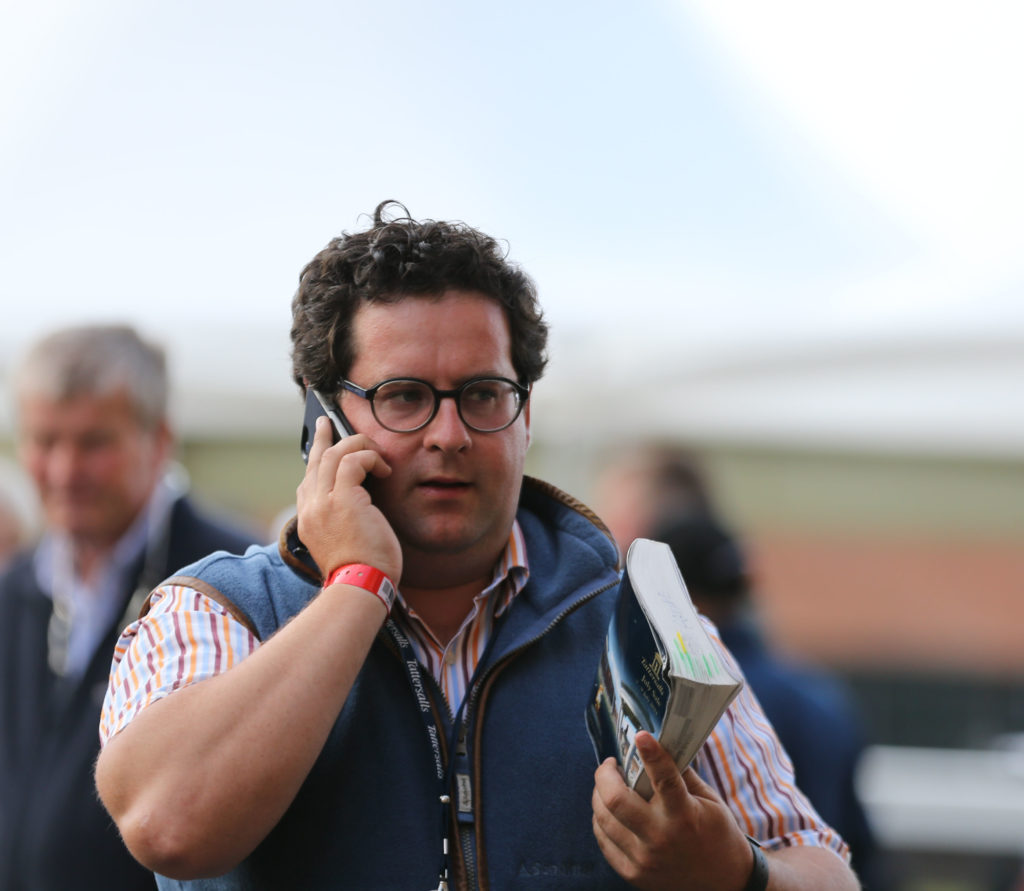
Michael Orlandi: “It pays to be at all the sales and to look at everything” – Photo: Laura Green/Tattersalls
“Look at Lola Showgirl. She’s from the first crop of Night Of Thunder, who’s all the rage now but was a sleeper at the foals sales that year – no one was bending over backwards to buy his stock.”
Orlandi has also enjoyed success with his yearling purchases, though, including Dragon Stakes runner-up Mojomaker, who was bought with Loughnane from the Goffs UK Premier Yearling Sale for £40,000.
So another moral of this story might just be to maintain a degree of flexibility at the sales, as bargain racehorses are an elusive breed who stay firmly out of sight for most of the time and then appear where and when you least expect them.
“It pays to be at all the sales and to look at everything,” reasons Orlandi. “Even if you see something you like and really believe in, but don’t have a specific order to fill there and then, you should do your best to try and get it bought for a client.
“It surely makes more sense to do that than the opposite – buy something just for the sake of filling an order. I think a lot of young agents can fall into that trap. It’s far better to walk away from a sale without buying anything if you haven’t seen anything you really liked, and wait for a better opportunity to present itself.”
Orlandi’s belief in casting one’s net wide, and not being constrained by fashion, is echoed by Bradley.
“I benefit from not needing to fill orders; I buy whatever I want, when I want,” he says. “A lot of agents don’t have that luxury. Instead they’ll be bidding while on the phone to a client who might be a specialist in their own field but knows little about the bloodstock industry.
“I have no one on the end of the phone, so there are no limiting factors in terms of orders and there’s no ego involved.”
In reality, there is no such thing as a how-to guide for buying bargain yearlings. But there are potentially useful lessons to be learned from those who have done it in recent years.
When it comes to physique, see as many horses as you can to gain a good idea of what a sound, athletic horse looks like, or call upon a trusted adviser who already knows. And when it comes to pedigree, always favour functionality over fashion.



